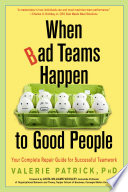

Team dynamics play a crucial role in the success or failure of any project. The book emphasizes that the interpersonal relationships within a team can significantly influence productivity, morale, and outcomes. When team members do not communicate effectively or fail to understand each other's strengths and weaknesses, it can lead to conflict, misunderstandings, and ultimately, project failure. The author argues that fostering a positive team environment, where open communication and trust are prioritized, is essential for mitigating potential issues. Techniques such as regular check-ins, team-building exercises, and creating a culture of feedback are recommended to enhance team dynamics.
Continue readingThe book highlights the necessity of recognizing toxic behaviors within a team. Toxic behaviors can manifest in various forms, such as negativity, lack of accountability, or poor communication skills. The author provides insights into how these behaviors can undermine team cohesion and productivity. By identifying these toxic elements early on, teams can address issues before they escalate. Strategies for confronting toxic behaviors include setting clear expectations, promoting accountability, and fostering a culture where team members feel safe to speak up about their concerns. The book also discusses the importance of leadership in modeling appropriate behavior and addressing toxicity head-on.
Continue readingLeadership is a pivotal factor in determining a team's success. The author emphasizes that effective leaders must not only manage tasks but also nurture their team members. This involves understanding individual motivations, providing support, and facilitating professional development. The book outlines various leadership styles and their impacts on team dynamics, suggesting that a transformational leadership approach—one that inspires and empowers team members—tends to yield the best results. Leaders are encouraged to prioritize emotional intelligence, active listening, and adaptability to foster a more engaged and productive team environment.
Continue readingConflict is an inevitable part of team dynamics, but how it is managed can make a significant difference in team outcomes. The book provides practical strategies for resolving conflicts constructively. It emphasizes the importance of addressing conflicts early and openly, rather than allowing them to fester. Techniques such as mediation, active listening, and collaborative problem-solving are discussed as effective means to resolve disputes. The author also highlights the value of creating a safe space for discussions, where team members feel comfortable expressing their viewpoints without fear of retribution. By equipping teams with conflict resolution skills, they can transform potential disruptions into opportunities for growth.
Continue readingA culture of accountability is essential for a high-performing team. The book stresses that accountability should be embraced at all levels, from leadership to individual contributors. When team members take ownership of their responsibilities and are held accountable for their actions, it fosters trust and reliability within the team. The author suggests implementing systems for tracking progress, setting clear goals, and providing regular feedback to enhance accountability. Additionally, celebrating successes and learning from failures are highlighted as key components of a healthy accountability culture. This approach not only boosts morale but also drives performance and innovation.
Continue readingDiversity within teams can lead to more innovative solutions and better decision-making. The book explores how diverse teams bring together varied perspectives, experiences, and skills, which can enhance problem-solving capabilities. However, the author notes that diversity alone is not enough; teams must also be inclusive, ensuring that all voices are heard and valued. Strategies for fostering inclusivity include promoting respectful dialogue, ensuring equitable participation in discussions, and actively seeking input from all team members. The book argues that when teams embrace both diversity and inclusivity, they are better positioned to tackle challenges and achieve their goals.
Continue readingThe journey of building an effective team is ongoing, and the book emphasizes the importance of continuous improvement and learning. Teams should regularly assess their processes, outcomes, and team dynamics to identify areas for growth. The author advocates for creating a feedback-rich environment where team members are encouraged to share insights and suggestions for improvement. Techniques such as retrospectives, peer reviews, and professional development opportunities are suggested as ways to facilitate continuous learning. By fostering a mindset of growth and adaptability, teams can remain resilient in the face of challenges and continuously enhance their performance.
Continue reading